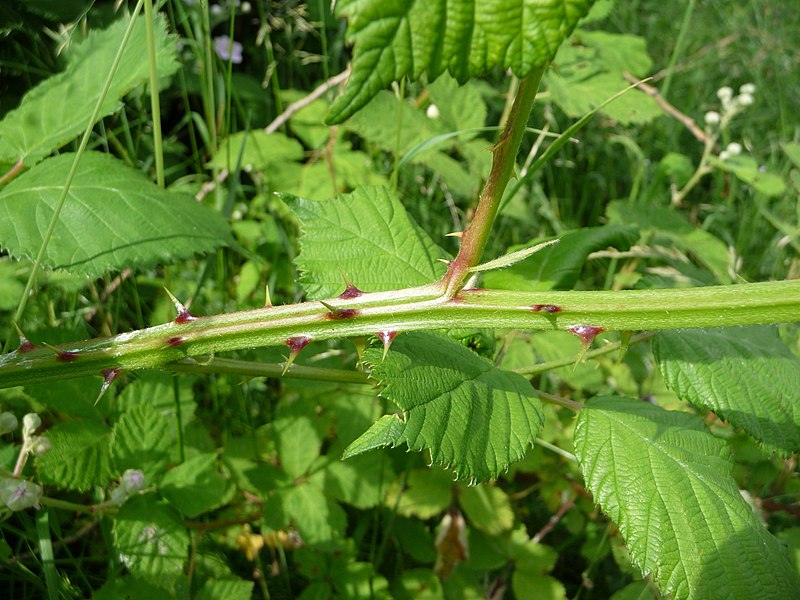Protecting Native Flora: How Himalayan Blackberry Affects Victoria's Ecosystems
Understanding the environmental impact of Himalayan blackberry and the importance of preserving biodiversity in Victoria, BC
Need help with your yard? Get your free quote today!
Get a Free Quote!
Himalayan blackberry overtaking native plant communities in Victoria's natural areas.
Introduction
Victoria, BC, is a region celebrated for its stunning natural landscapes and rich biodiversity. Our native flora not only contributes to the beauty of our surroundings but also plays a crucial role in maintaining healthy ecosystems. However, invasive species like the Himalayan blackberry (Rubus armeniacus) pose a significant threat to these delicate environments. This aggressive plant disrupts local ecosystems, outcompetes native species, and alters habitats that wildlife depends on. In this article, we explore how Himalayan blackberry affects Victoria's ecosystems and why protecting our native flora is essential.
The Importance of Native Flora in Victoria
Ecological Roles
- Biodiversity Support: Native plants provide food and habitat for local wildlife, including insects, birds, and mammals.
- Soil Health: They contribute to soil stability and fertility through natural nutrient cycles.
- Water Regulation: Native vegetation aids in water filtration and reduces erosion, protecting waterways.
Cultural and Aesthetic Value
- Cultural Heritage: Many native plants hold significance for Indigenous communities and local traditions.
- Natural Beauty: Native flora contributes to the unique landscapes that attract tourists and enrich residents' quality of life.
Himalayan Blackberry: An Invasive Threat
Origin and Spread
- Introduced Species: Brought to North America in the late 1800s, it has since escaped cultivation.
- Aggressive Growth: Spreads rapidly through seed dispersal and vegetative means, forming dense thickets.
Characteristics
- Competitive Advantage: Its robust growth and adaptability allow it to dominate various habitats.
- Resistance: Exhibits tolerance to different soil types, moisture levels, and can thrive in disturbed areas.
Impact on Victoria's Ecosystems
Displacement of Native Plants
- Outcompeting Flora: Himalayan blackberry shades out and crowds native plants, reducing their ability to photosynthesize and reproduce.
- Loss of Diversity: Monocultures of blackberry reduce plant diversity, weakening ecosystem resilience.
Alteration of Habitats
Wildlife Disruption: Changes in plant communities affect the species that rely on native flora for food and shelter.
- Pollinators: Native bees and butterflies may lose vital nectar sources.
- Birds and Mammals: Nesting sites and foraging areas are compromised.
Soil Changes: Dense root systems alter soil composition and can lead to increased erosion when removed.
Fire Risk Increase
- Fuel Accumulation: Dead canes accumulate, creating a higher risk of wildfires, which can devastate ecosystems.
Spread of Disease and Pests
- Disease Reservoir: Can host pests and diseases that may spread to native plants.
- Ecosystem Imbalance: Alters predator-prey relationships and can lead to pest population surges.
The Ripple Effect on the Environment
Impact on Waterways
- Riparian Zones: Invasive growth along streams and rivers affects water quality and aquatic habitats.
- Erosion: Removal of native plants that stabilize banks can lead to increased sedimentation.
Climate Change Implications
- Carbon Sequestration: Loss of diverse native vegetation can reduce the ecosystem's ability to sequester carbon.
- Adaptation and Resilience: Diverse ecosystems are better equipped to adapt to climate change impacts.
The Importance of Protecting Native Flora
Ecosystem Services
- Natural Pest Control: Native plants support beneficial insects that control pests naturally.
- Pollination: Essential for the reproduction of many plant species, including those important for agriculture.
Cultural Significance
- Indigenous Connections: Many native plants are integral to the cultural practices and knowledge of Indigenous peoples.
- Community Well-being: Access to natural spaces with native biodiversity enhances mental and physical health.
How Ascent Yard Care Helps Protect Victoria's Ecosystems
At Ascent Yard Care, we are committed to preserving the natural beauty and ecological health of Victoria by providing professional Himalayan blackberry removal services that prioritize environmental sustainability.
Our Environmentally Responsible Approach
1. Careful Assessment
- Site Evaluation: Identify the extent of the infestation and the native species present.
- Customized Plan: Develop strategies that minimize impact on native flora and fauna.
2. Eco-Friendly Removal Techniques
- Selective Removal: Target Himalayan blackberry while preserving surrounding native plants.
- Organic Herbicides: Use environmentally friendly products that break down without harming the ecosystem.
3. Restoration and Rehabilitation
- Replanting Natives: Introduce native plant species to restore biodiversity.
- Habitat Enhancement: Create conditions that support wildlife and promote ecosystem recovery.
4. Education and Community Engagement
- Client Education: Provide information on the importance of native plants and how to protect them.
- Community Initiatives: Participate in local efforts to control invasive species and promote conservation.
Why Choose Ascent Yard Care
- Expert Knowledge: Our team understands the complexities of local ecosystems and the best practices for invasive species management.
- Sustainable Practices: Commitment to eco-friendly methods ensures that our work contributes positively to the environment.
- Support for Biodiversity: We prioritize the preservation and enhancement of native flora in all our projects.
What You Can Do to Help Protect Native Flora
Early Detection and Action
- Regular Monitoring: Check your property for signs of Himalayan blackberry and other invasive species.
- Prompt Removal: Address infestations quickly to prevent spread.
Promote Native Plant Growth
- Landscaping Choices: Use native plants in your garden to support local ecosystems.
- Provide Habitat: Create garden features that attract and support wildlife.
Avoid Spreading Invasives
- Proper Disposal: Dispose of plant material responsibly to prevent accidental spread.
- Clean Equipment: Ensure tools and machinery are clean before moving between sites.
Community Involvement
- Education: Share information with neighbors and participate in local conservation groups.
- Advocacy: Support policies and initiatives that protect native species and habitats.
Contact Ascent Yard Care for Professional Assistance
Protecting Victoria's native flora is a collective responsibility. If you're dealing with Himalayan blackberry on your property, professional removal is the most effective way to safeguard the environment.
